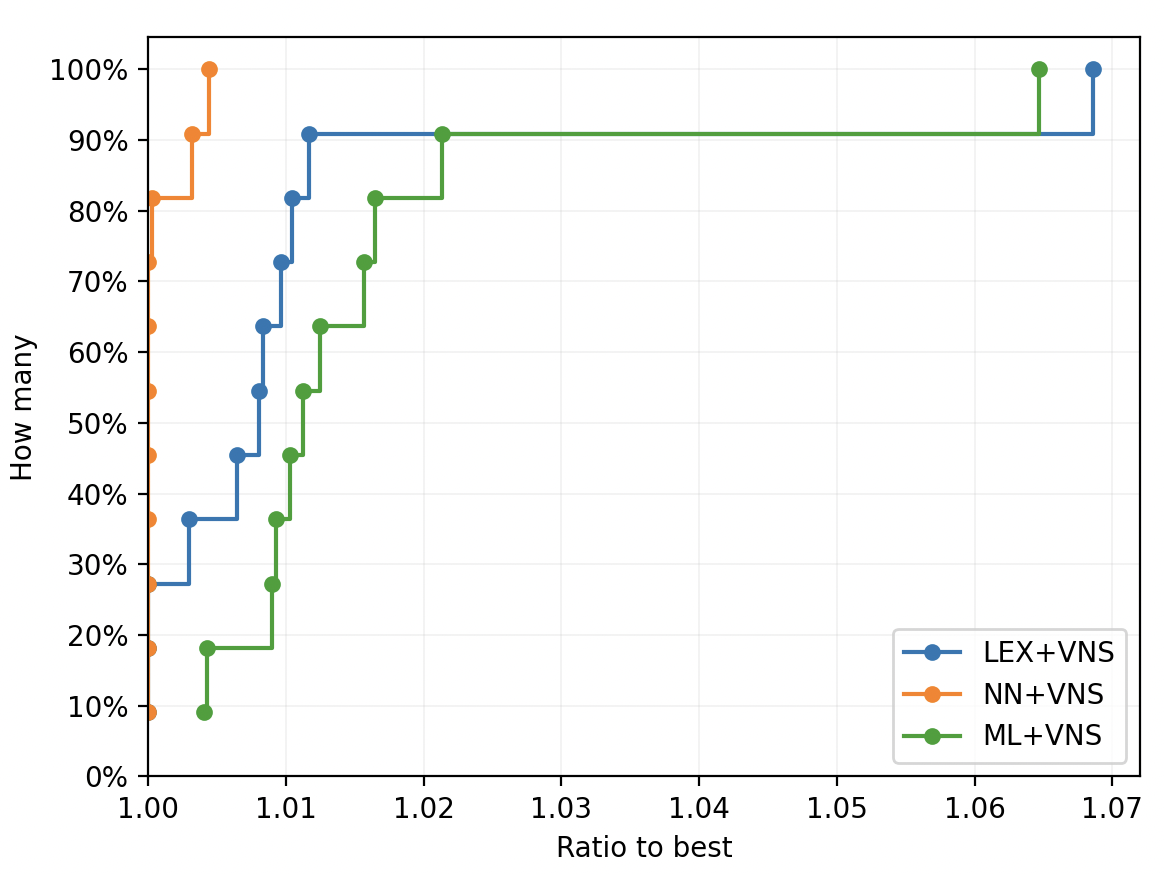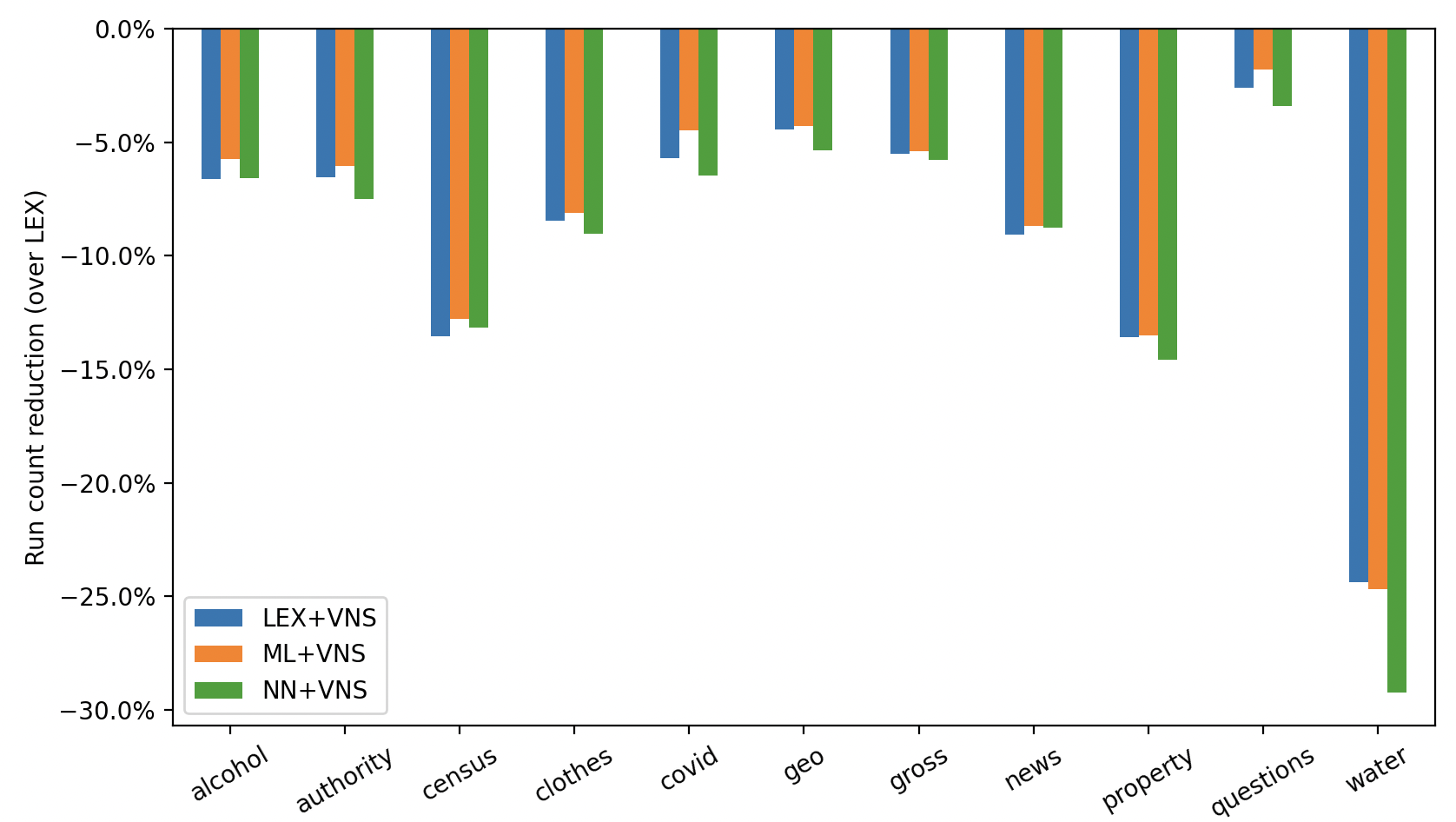This repository contains heuristics, metaheuristics and benchmarking scripts for enhancing the Run-Length Encoding in a database. The main degree of freedom after column reordering is row reordering. To this end, the algorithms implemented here try to find the permutation of rows that minimize the number of run counts in a database. In other words, we want to maximize the number of ideantical values that appear in every column.
Heuristics explored in this project:
- Lexicographical order (LEX)
- Nearest Neighbor algortihm (NN)
- Multi-List (ML)
Metaheuristics explored in this project:
Start by cloning the repository:
git clone https://github.com/fsossai/rle-compression
Make sure all required python packages are available:
pip install -r requirements.txt
Most of the algorithms are implemented in C++17.
To compile the sources just run make. To use g++ instead of clang++ run make CC=g++.
The compressor (compress.py) works with JSON and CSV files.
python compress.py mydb.csv
will create a file named mydb.tar that can decompressed with python decompress.py mydb.tar.
To explore the performance of the heuristics and combine them together use the option --pipeline or -p for short:
python compress.py random_dbs/db_N10k_M10_R10.csv -t 10 -p rand nn vns
This will shuffle the database (rand) and its output will be piped to NN and VNS, in this order.
The time limit -t is a parameter associated with VNS only.
At the end of the execution a summary note will be produced. E.g.:
┌─ Summary
│ Input file name : random_dbs/db_N10k_M10_R10.csv
│ Output file name : db_N10k_M10_R10.tar
│ Input file size : 0.5M
│ Output file size : 0.6M
│ Number of rows : 10K
│ Pipeline : RAND+NN+VNS
│ Input runs : 109953
│ Output runs : 99688
│ Ref runs : 100932
│ Best runs : 39556
│ Improvement (over input) : 1.103x
│ Improvement (over ref) : 1.012x
│ Improvement (upper bound) : 2.552x
│ Compression ratio : 133.27%
│ Compression time : 10.443 s
└─
In the directory random_dbs you can play with a bunch of artificial databases generated with generate_random_db.py.
To generate a databases with a million rows and 5 columns you can run:
python generate_random_db.py -N 1000000 -M 5 -R 1000
The number of unique values per column with behave according to a power law and -R is a parameter that represents
the expected ratio between the number the highest and the lowest number of unique values on a column.
benchmark.py comes in handy when evaluating and comparing
many pipelines (i.e. combinations of (meta-)heuristics) against many different inputs.
python benchmark.py random_dbs/* -t 10
will run the compressor on the input files running a list of predefined pipelines:
- NONE
- LEX
- NN
- ML
- NONE + VNS
- LEX + VNS
- NN + VNS
- ML + VNS
This will take approximately 2 minutes and will save all results in file with a name similar to bm_231207-015944.csv
(any name can be specified with the -o option).
The following performance indicator are of interest in out context:
- Reduction of run counts
- Execution time
Once benchmark.py is done and an output file bm.csv is produced, these metrics can be easily explored
by means of the following commands:
python plot_ratio.py bm.csv
python plot_reduction.py bm.csv
python plot_time.py bm.csv
python plot_perfprof.py bm.csv
The last command produces a performance profile, meaning a graphical representation of how many experiments on a database A fall with a certain ratio to the best performance (run counts in our case) achieved by the best method on the same database A.
Here are some examples obtained on a set of 10,000-row databases.


